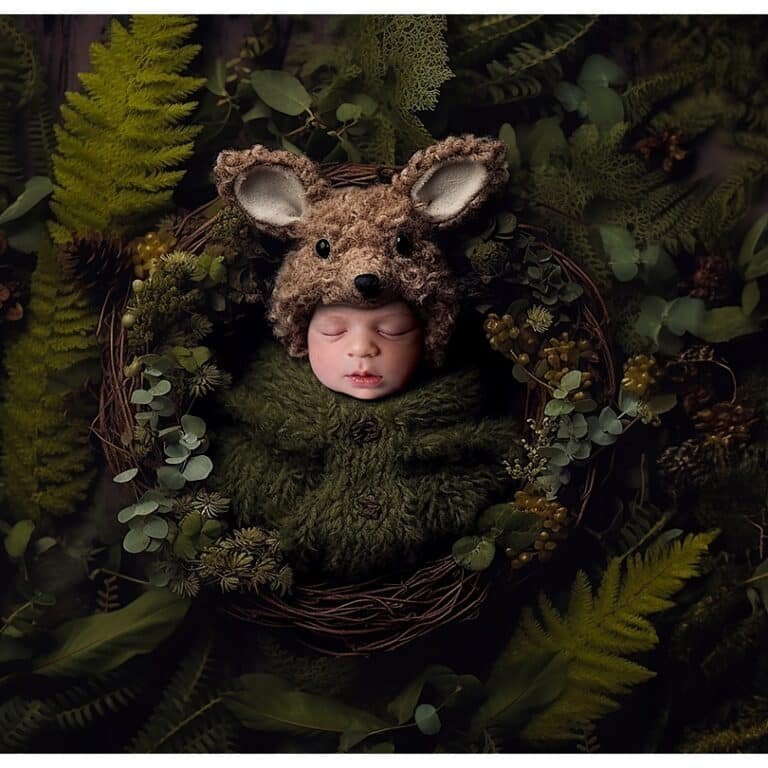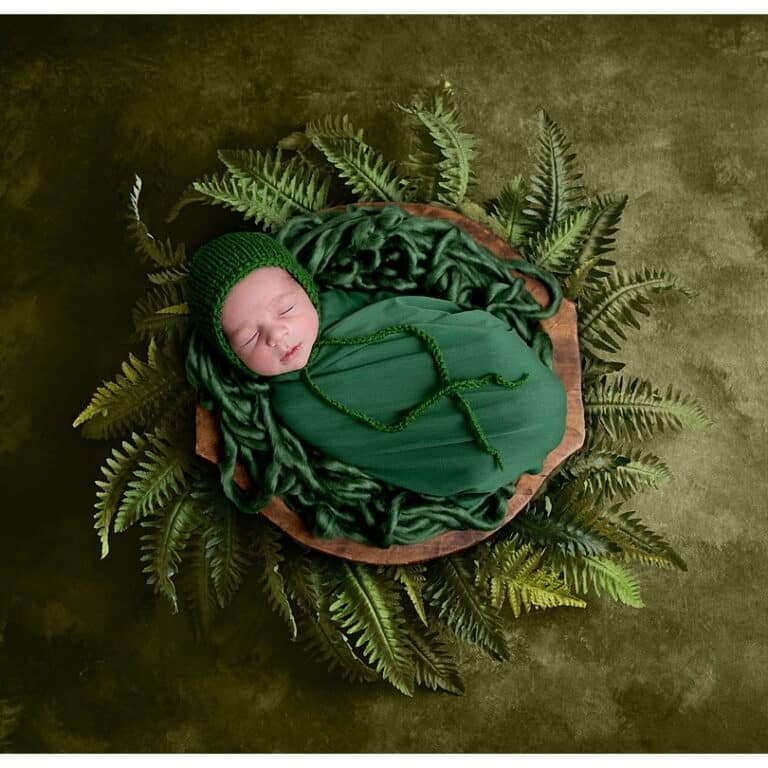Pinterest for Photographer Marketing: Elevate Your Visual Content Strategy

Pinterest has emerged as an essential platform for photographers looking to market their work. With its visually appealing interface, photographers can create boards and pins that not only showcase their portfolio but also attract a broad audience. This digital space allows for the cultivation of a visual content strategy that can significantly enhance a photographer’s online presence.
By leveraging the power of visually appealing content, photographers can use this platform to narrate their artistic journey, share their projects, and connect with potential clients. Boards and pins act as a digital portfolio, presenting a curated collection of a photographer’s images that highlight their expertise and style, making it an ideal platform for photographers to expand their reach.
Understanding Pinterest’s Power for Photographers
Pinterest serves as a potent tool for photographers aiming to promote their business. Its unique ecosystem allows for the showcasing of high-quality images, making it easier to capture the attention of potential clients. By strategically pinning their work, photographers can effectively use Pinterest to drive traffic to their website, thereby increasing their business visibility and client engagement.
Pinterest: Beyond a Social Platform, A Visual Search Engine
At its core, Pinterest transcends the traditional bounds of social media by functioning as a visual search engine. This shift emphasizes the importance of creating content that is not only visually appealing but also rich in relevant content, allowing photographers to reach their target audience more effectively. By understanding this dynamic, photographers can optimize their content to match the search intent of users, enhancing visibility and engagement.
Decoding the Difference: Search Engine vs. Social Media
Understanding the distinction between search engines and social media is crucial for photographers using Pinterest. Unlike social media, which relies on engagement and shares, Pinterest operates as a search engine, prioritizing relevant content in search results. This difference means that success on Pinterest is driven by the strategic use of keywords and the creation of content that responds to users’ search queries, rather than just social interactions.
Setting the Stage: Optimize Your Pinterest Profile
To make the most out of Pinterest, optimizing your profile is a critical first step. This includes selecting a profile picture that represents your brand, using relevant to your business keywords in your board descriptions, and ensuring your bio effectively communicates your value proposition. These elements serve as the foundation of your Pinterest strategy, enabling your profile to attract and engage your target audience more effectively.
Crafting the Perfect Photographer Profile
Creating a photographer profile that captures the essence of your brand involves careful consideration. The profile picture you choose and the words you use in your bio should clearly reflect your professional identity and the unique value you offer. This deliberate crafting helps in attracting potential clients who are searching for specific photography services on Pinterest.
Selecting a Profile Picture and Crafting Your Bio
Your profile picture and bio are often the first things potential clients will notice. Selecting a professional, high-quality profile picture that resonates with your brand, alongside a bio that succinctly highlights your specialties, can significantly impact how potential clients perceive you. This strategic approach ensures that your Pinterest profile effectively communicates your brand’s value and appeal.
Building Your Brand With Relevant Boards
For photographers, especially those in niches like wedding photography, creating boards that are relevant to your target audience, such as ‘Wedding Inspiration’ or ‘Portrait Ideas,’ can attract potential wedding clients. These boards allow photographers to showcase their expertise and style, making it easier for potential clients to visualize their own needs reflected in your work.
Organizing Content and Board Descriptions for Maximum Impact
Maximizing the impact of your Pinterest presence involves meticulously organizing your content. Boards that are relevant to your photography niche should be clearly labeled with board titles and descriptions that utilize keywords. This organization not only helps potential clients find your work more easily but also enhances the SEO of your Pinterest profile, leading to greater visibility and engagement.
The Art of Attracting Traffic: Creating and Optimizing Pins
Creating pins that attract traffic involves more than just posting high-quality images. Incorporating relevant keywords into your pin descriptions, using vertical pins with an optimal aspect ratio, and adding text to images encourages users to click through to your website. This strategy is key in driving engagement and converting Pinterest users into clients.
The Blueprint of a Perfect Pin: From Image to Description
The foundation of a successful pin lies in its composition. Utilizing high-quality images, possibly showcasing your lightroom presets, and ensuring the “pin it” button is visible and accessible, are crucial elements. These components work together to grab the attention of Pinterest users, encouraging them to engage with your content.
Crafting Eye-Catching Images and Compelling Descriptions
To stand out in the crowded Pinterest environment, especially for a wedding photography business, crafting eye-catching images paired with compelling descriptions is essential. These elements should work in harmony to tell a story that resonates with your target audience, compelling them to explore your work further.
Mastering the Pinning Process: A Step-by-Step Guide
Successfully navigating the pinning process on Pinterest can significantly enhance a photographer’s visibility. This involves understanding the best practices for pin creation and placement, ensuring your content reaches its intended audience.
Scheduling Pins for Consistent Engagement
Consistency is key to maintaining engagement on Pinterest. Scheduling pins to be posted at optimal times ensures your content reaches the maximum audience. Leveraging Pinterest as a visual search engine, this strategy helps keep your work in front of potential clients, driving traffic and engagement.
Keywords: Your Secret Weapon in Pinterest SEO
Utilizing keywords effectively is crucial in optimizing your Pinterest SEO. By researching and incorporating keywords that are relevant to your photography business, you can significantly improve the visibility of your pins, making it easier for potential clients to discover your work.
Unlocking Keywords: From Research to Application
When photographers dive into Pinterest, understanding the power of keywords is like finding a treasure map. Keywords are not just words; they are the path that potential clients use to find visual content. By researching popular and relevant keywords, photographers can ensure their pins are the ones people come across when searching for inspiration, tips, or services related to photography. This process starts with thinking like a client and asking, “What would I search for if I were looking for this type of photography?” From there, applying these keywords across pin descriptions, titles, and even board names can dramatically increase visibility.
Utilizing Pinterest for Keyword Inspiration
Photographers can turn Pinterest itself into a goldmine for keyword inspiration. By using the search bar, they can start typing in photography-related terms and see what suggestions pop up. These suggestions are not random; they are based on common searches by Pinterest users, making them incredibly valuable. Additionally, observing the pins that rank high for these searches can offer insights into what keywords competitors are using. Integrating these keywords into their own pins helps photographers not only match but also compete for attention in this visual search engine’s vast landscape.
Beyond the Basics: Advanced Keyword Strategies
For photographers aiming to go beyond basic keyword use, exploring advanced strategies can make a significant difference. One powerful approach is to focus on keywords that are visually appealing. Since Pinterest is a visual platform, words that evoke strong images or emotions can be more effective. For example, using descriptive terms that capture the style, mood, or color scheme of the photography can attract more targeted, engaged viewers. This method requires a creative blend of art and science, leveraging the visual nature of photography with the strategic use of keywords to capture the right audience.
Integrating Location-Specific Keywords for Localized Marketing
Photographers looking to attract local clients should not overlook the importance of location-specific keywords. By incorporating the names of cities, neighborhoods, or landmarks into their Pinterest SEO strategy, photographers can make their pins more relevant to users searching for services in specific areas. This localized marketing approach helps pins surface in searches by potential clients who are not just looking for any photographer, but one in their immediate area. It’s a strategy that combines the broad reach of Pinterest with the precision of targeted marketing, making it easier for local clients to find and connect with photographers.
Engaging Features to Boost Your Photography Marketing
Pinterest offers a range of engaging features that can significantly boost photography marketing efforts. By utilizing video pins and idea pins, photographers can showcase their work in dynamic ways that still images alone cannot. These features allow for storytelling, behind-the-scenes glimpses, and tutorials that add depth to a photographer’s online presence. Embracing these tools not only diversifies content but also increases the chances of engaging potential clients and driving traffic back to the photographer’s website or portfolio.
Diversifying Content: The Role of Video and Idea Pins
Video content and idea pins play a crucial role in diversifying content on Pinterest. Video pins allow photographers to share more than just a snapshot; they can convey emotion, storytelling, and the atmosphere of their work. Idea pins, on the other hand, offer a format for step-by-step guides, tips, or themed collections, providing value to viewers while showcasing the photographer’s expertise. By incorporating these formats into their Pinterest strategy, photographers can engage their audience in new ways, encouraging more interaction and interest in their work.
Tips for Creating Engaging Video Content
Creating engaging video content for Pinterest doesn’t have to be daunting. Start with clear, high-quality videos that showcase the best of your photography. Use natural lighting to highlight details and colors, and consider adding text overlays to share quick tips or insights directly on the video. Remember, the first few seconds are crucial to capturing attention, so start strong. Also, incorporating a call to action at the end can encourage viewers to explore more of your work. With consistency and creativity, video content can significantly enhance your Pinterest presence.
The Power of Collaboration: Tagging Vendors and Partners
Collaboration is a powerful strategy on Pinterest. By tagging vendors, locations, and partners in pins, photographers can tap into their networks, expanding their reach. This practice not only highlights the collaborative nature of photography projects but also introduces the photographer’s work to a broader audience. When vendors and partners share these tagged pins in return, it creates a ripple effect, significantly increasing the visibility of the original content. This strategy leverages the social aspect of Pinterest, turning each pin into an opportunity for discovery.
Leveraging Collaboration for Broader Reach
Leveraging collaboration on Pinterest involves more than just tagging others in your pins. It’s about creating a network of shared interests and mutual promotion. When photographers engage in collaborations, they can benefit from the combined audiences of all parties involved. For example, a wedding photographer tagging a popular wedding venue or a floral designer in their pins can attract couples planning their weddings. This synergy not only broadens the reach of each pin but also positions the photographer as a connected and reputable choice within their niche.
Driving Traffic: Strategic Pinning for More Website Visits
Strategic pinning is key to driving traffic from Pinterest to a photographer’s website. This involves not just the creation of visually appealing pins but also the use of relevant keywords, compelling pin titles, and effective text overlays. By optimizing pins for both aesthetics and search, photographers can increase their visibility on this visual platform, encouraging users to click through to their websites. High-quality images paired with strategic descriptions and calls to action can make Pinterest a powerful tool for increasing website visits and, ultimately, bookings.
The Do’s and Don’ts of Pinning: A Strategic Approach
When it comes to pinning, there are strategic dos and don’ts that can make a big difference in driving traffic. Do use high-quality images that represent your work well. Do include relevant keywords in your pin titles and descriptions to improve searchability. Don’t forget to add a call to action, encouraging users to visit your website for more information. However, don’t overpin in a short time frame, as this can overwhelm your followers. A balanced, thoughtful approach to pinning can significantly enhance your Pinterest presence and drive more traffic to your website.
Understanding the Importance of CTA’s in Pins
Call to Actions (CTAs) in pins are crucial for converting Pinterest viewers into website visitors. A well-crafted CTA guides users on what to do next, whether it’s visiting a website, booking a session, or viewing a portfolio. For photographers, CTAs like “Book Now” or “See More” can be particularly effective. Including these prompts in the text overlay of the image or in the pin description can significantly increase engagement and click-through rates, making CTAs a vital tool in the strategic pinning process.
The Debate: To Pin or Not to Pin Others’ Content?
The decision to pin or not to pin others’ content is an important strategic consideration. While pinning your own content is essential for driving traffic to your website, sharing other people’s pins can also be beneficial. It demonstrates your engagement with the broader Pinterest community and can inspire your followers with a diverse range of ideas and styles. However, it’s important to maintain a balance, ensuring your portfolio remains the focus. Selectively pinning content that aligns with your brand can attract a like-minded audience, enhancing your profile’s appeal.
The Role of Group Boards in Today’s Pinterest Landscape
Group boards have evolved in today’s Pinterest landscape, yet they remain a valuable tool for photographers. By joining or creating group boards related to photography, you can share your work with a larger, engaged audience. These boards can be especially useful for sharing lightroom presets, tips, and techniques, attracting followers interested in photography improvement. Contributing high-quality, relevant content to these boards can increase your visibility and position you as an authority in your niche, fostering community while driving traffic to your website.
Analytics and Adaptation: Measuring Your Pinterest Success
Measuring success on Pinterest is crucial for refining your photography marketing strategy. Tools like Google Analytics allow photographers to track how much traffic Pinterest drives to their websites and gauge the performance of individual pins. By analyzing metrics such as views, clicks, and engagement rates, photographers can identify what content resonates most with their audience. This insight enables them to adapt their strategy, focusing on high-performing types of content and keywords, and ultimately, optimizing their Pinterest presence for better results.
Key Metrics to Track: Followers vs. Views
When growing your photography business, understanding the difference between followers and views on Pinterest is crucial. Followers indicate a direct interest in your content, suggesting a long-term engagement. Views, on the other hand, represent how many times your content has been seen, which can help gauge the immediate reach and visibility of your pins. Both metrics are essential for tailoring your Pinterest strategy to increase both your audience size and engagement rates.
Analyzing and Reacting to Pin Performance
Analyzing pin performance involves more than just looking at likes or repins. It’s about understanding which content resonates with your audience. By creating pins, whether through Photoshop or Canva, and monitoring their performance, you can identify trends and preferences within your target market. This insight allows you to adjust your strategy, focusing on what works best for engagement and conversion, ultimately leading to a more effective Pinterest presence for your photography business.
Beyond the Basics: Tips and Tricks for Pinterest Success
For photographers aiming to excel on Pinterest, moving beyond basic strategies is essential. Success on this platform is about leveraging its unique features and understanding the audience’s behavior. This involves a mix of creativity, strategic planning, and consistent effort to ensure your visual content stands out and attracts the right audience.
Avoiding the Pinterest Hustle: Efficiency Tips for Photographers
Photographers can streamline their Pinterest activities by focusing on efficiency. This includes batching content creation, using scheduling tools to maintain a consistent online presence, and focusing on quality over quantity. By implementing these strategies, photographers can save time while maximizing their visibility and engagement on Pinterest.
Preparing Multiple Pins and Scheduling Strategies
Effective Pinterest marketing involves preparing multiple pins in advance and utilizing scheduling tools. Conducting thorough keyword research can help in tailoring content that resonates with your target audience, thereby increasing visibility. Scheduling pins for optimal times ensures your content reaches the widest audience possible without necessitating constant manual pinning, making your marketing efforts more efficient and effective.
Quality over Quantity: The Importance of High-Value Content
For portrait photography, the focus should be on the quality of images you pin rather than the quantity. High-value content that is relevant to your photography style and audience interests will more likely engage and attract potential clients. Such strategic content selection strengthens your brand identity and enhances your profile’s appeal on Pinterest.
Crafting Descriptions That Drive Engagement
To captivate potential clients among Pinterest’s million monthly active users, crafting engaging descriptions for your pins is key. These descriptions should not only be SEO-friendly but also clearly articulate the value your photography offers. Including calls to action can significantly drive traffic to your website, converting viewers into clients by effectively communicating what sets your work apart.
Final Insights: Unleashing the Full Potential of Pinterest
For photographers, especially those planning their wedding portfolios, Pinterest offers a unique platform to showcase their work. By employing a comprehensive strategy that includes everything from optimizing your profile to strategic pinning and analytics, photographers can tap into Pinterest’s vast network to grow their business. It’s about leveraging visual content in a way that appeals to couples planning their wedding, ultimately driving engagement and bookings.
Developing a Comprehensive Pinterest Strategy for Photographers
Developing a comprehensive Pinterest strategy involves wedding photographers, photography tips, business tips, and leveraging resources like Adventure Instead Academy. Creating boards for photographers that align with these themes can significantly grow your photography business. Incorporating tips and tricks for maximizing visibility during highest traffic times, using business accounts, and focusing on creating pins with vertical images can set the foundation for a successful Pinterest presence.
From Setup to Strategy: A Recap of Key Steps to Success
Transitioning from setup to a strategic approach on Pinterest involves understanding the platform’s nuances. This includes optimizing your profile, engaging with the community, and using analytics to guide your content strategy. Success on Pinterest for photographers is not accidental; it’s the result of thoughtful planning, consistency, and adapting to the platform’s evolving landscape.
Bringing It All Together: Your Roadmap to Pinterest Mastery
Mastering Pinterest requires a blend of creativity, strategic planning, and analytics. By focusing on super helpful content, optimizing your conversion rate, understanding the percentage of users who engage with your content, and tailoring your marketing efforts and content schedule accordingly, you can significantly enhance your Pinterest presence. This comprehensive approach will ensure your content not only reaches but also resonates with your target audience, driving engagement and business growth.
Embrace the Journey: Continuous Learning and Adaptation
The key to Pinterest success is the continuous journey of learning and adaptation. As photographers, pinning your own photos with a strategy that evolves with the platform ensures your content remains fresh and engaging. Embracing this journey of growth and change is essential for maintaining a compelling and effective presence on Pinterest.
Staying Ahead: Keeping Up With Pinterest’s Evolving Landscape
Staying ahead in Pinterest’s evolving landscape requires a proactive approach. This means regularly updating your strategy based on platform changes, audience behavior, and content performance. By staying informed and adaptable, photographers can ensure their content continues to engage and attract their target audience, securing their place in the competitive digital arena of Pinterest.
Follow Me on Instagram
Get in touch
Connect
Maternity, Newborn, Children Photographer In Jacksonville. Serving Jacksonville, Orange Park. Ponte Vedra and North East FL areas.



























